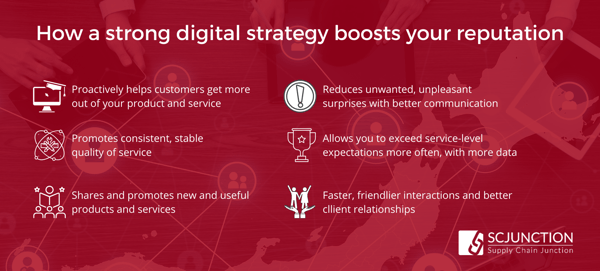3 critical insights for successful eCommerce omnichannel strategies


We don’t just care about your smart warehouse and how our software can help you to shape your business’ transition to omnichannel in this climate. We need you to understand the WHY and HOW so that you can better manage this necessary evolution within your company.
Three trends in particular are reshaping successful approaches to customer care:
1. Digital channels have completely changed the ways that customers prefer to interact.
Beyond the expectation that information and service will be accessible with a few keystrokes, customers have also become accustomed to engaging with companies through multiple channels. Many customers, for instance, use different channels to gather information on products and to make a purchase.
Social media and chat are also rapidly gaining channel share. Companies that believed digital channels would reduce the volume of engagement and the number of touch-points have been disappointed to find both often continue to increase.

2. Quality customer care is highly dependent on digital performance.
Companies with subpar digital capabilities actually increase customer demand for engagement.
Attempting to migrate customers to digital channels before full functionality can trigger the “boomerang effect,” in which customers can keep coming back to a company multiple times in an effort to resolve a problem, meaning at best a premature sloppy transition can significantly increase both the number of transactions and the cost per transaction. At worst you lose the customer forever.
Conversely excellent digital strategies and systems see customer queries swiftly handled, saving time and money and virtually guaranteeing repeat business.

3. Individual touch-points must be seen through the lens of the end-to-end customer journey.
While companies can be tempted to focus on optimising individual touch-points, believing that the whole will automatically be greater than the sum of its parts, such targeted intervention can magnify variations in service and inconsistencies in other interactions. Moreover, no matter how successful specific tools are (for example, online self-service), companies that lack visibility into where customers are choosing to interact from touch-point to touch-point can still experience service breakdowns.
Some elements stubbornly persist in refusing digitisation, such as customers still favouring live agents for complex requests. As such, companies with strategies that seek to minimise access to live agents at all costs often see lower customer satisfaction without reducing their overall customer-care expenses. These trends all conspire to make omnichannel customer care that much more complex. Live agents clearly are not going away; in fact, they are more important than ever for certain kinds of interactions.
Digital channels can be invaluable when well executed and integrated, but they can also create issues and increase demand for live agents when poorly managed. Therefore, companies embarking on an omnichannel transformation must ensure that each channel, as well as hand-offs across channels, are optimized for each customer interaction.
To do that, they must seek to understand what customers truly care about on a granular level. How do you ensure that you can do this?
Read more about omnichannel here: What Makes a Successful Omnichannel Experience? (BLOG)
Find out more about Manhattan's omnichannel offering here:
TAGS
- WMS (51)
- Warehouse Best Practice (46)
- Implementing a WMS (29)
- Managing your warehouse (19)
- Omni Channel (18)
- eCommerce (18)
- Blog (16)
- Supply Chain Best Practice (16)
- Customer Journey (9)
- Mid-Level (8)
- Warehouse optimisation (7)
- General Tips (5)
- Industry General (5)
- Information (5)
- Trends (5)
- managing your Supply Chain (5)
- saudi arabia (5)
- Press Release (4)
- smart warehouse (4)
- 3PL (3)
- News (3)
- ERP (2)
- Entry-level (2)
- ROI (2)
- Case Study (1)
- OMS (1)
- Picking (1)
- Solution-Specific (1)
- Transport Management System (1)
Take A Look At The Results Of A Successful WMS Implementation.
See how Tarsus Distribution, in collaboration with SCJ boost overall efficiency by 60%



